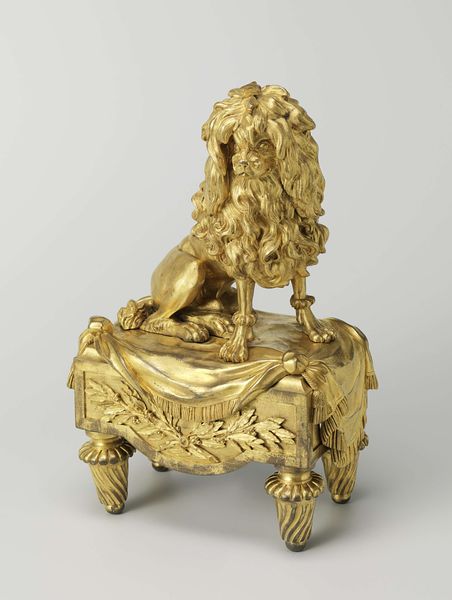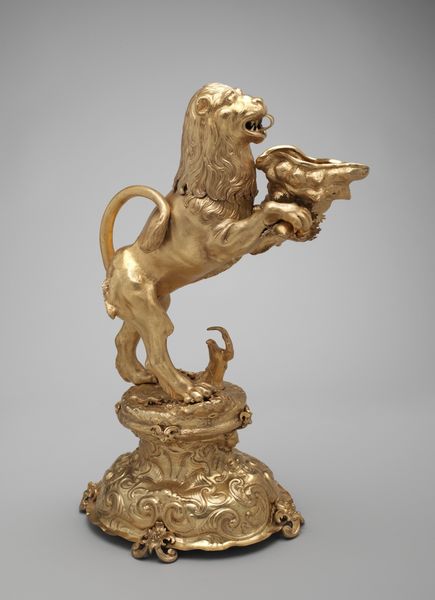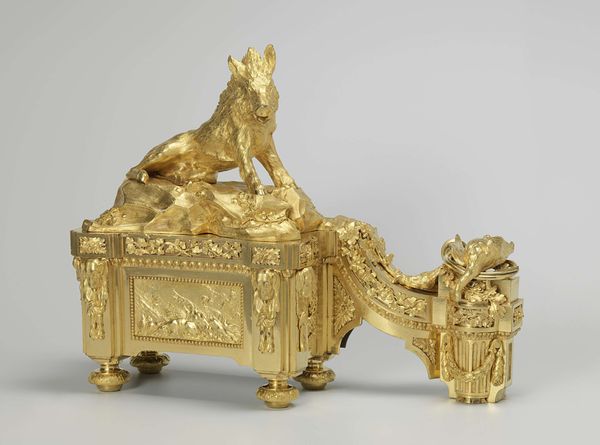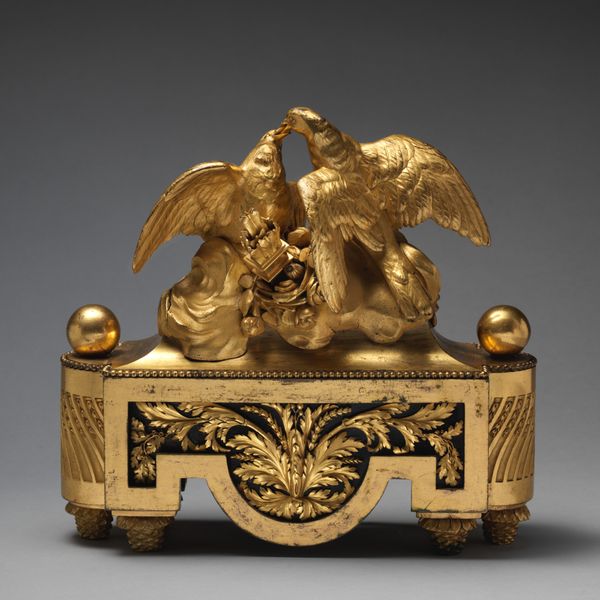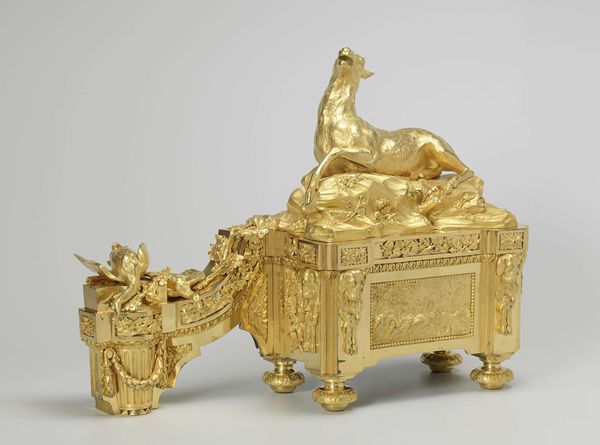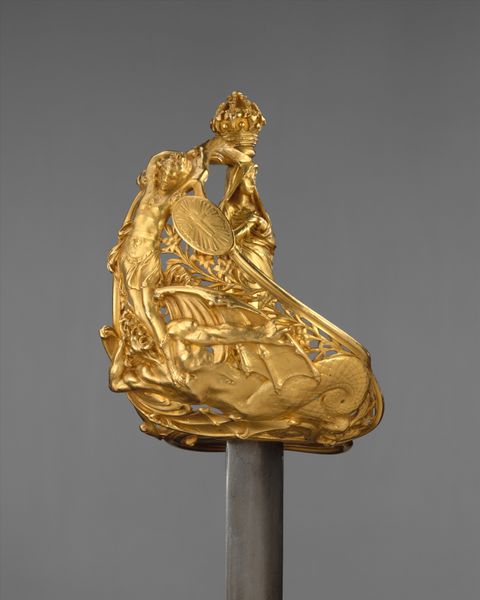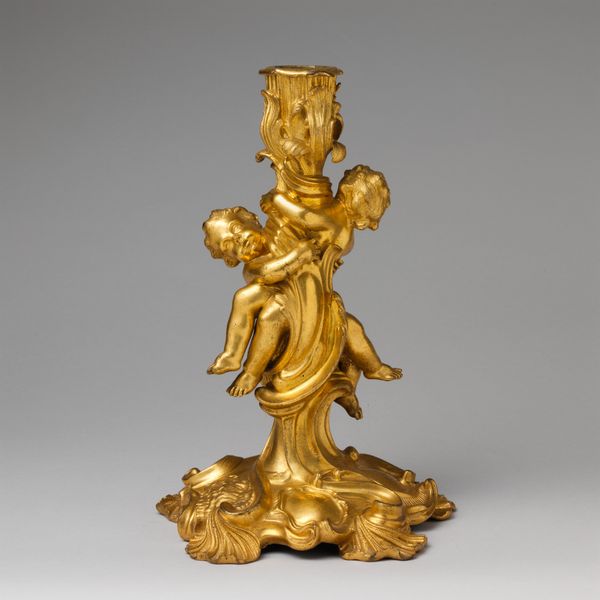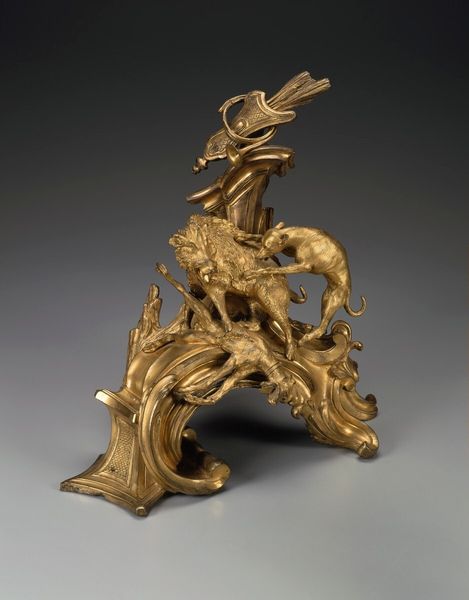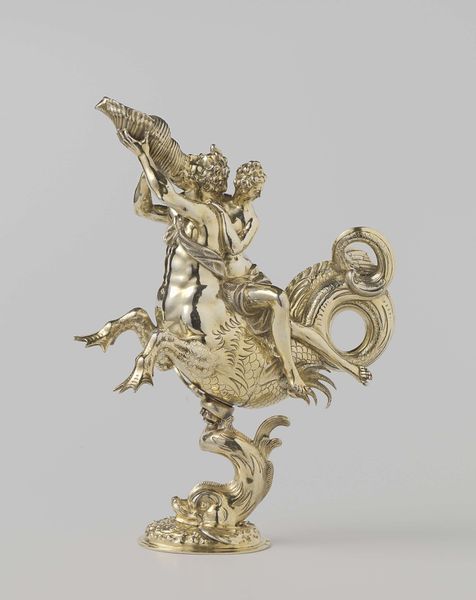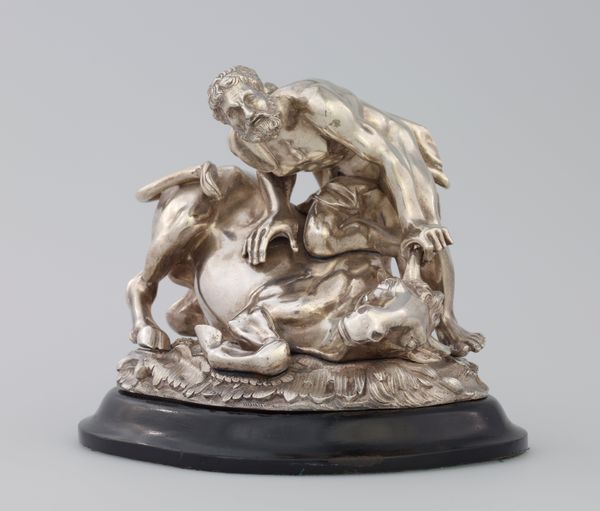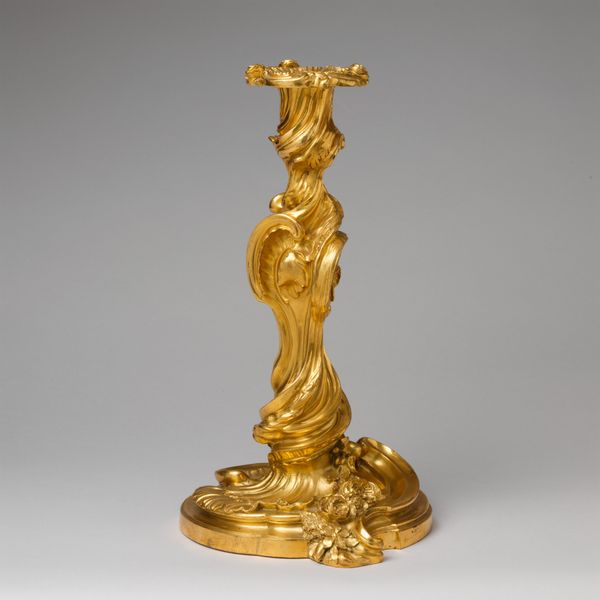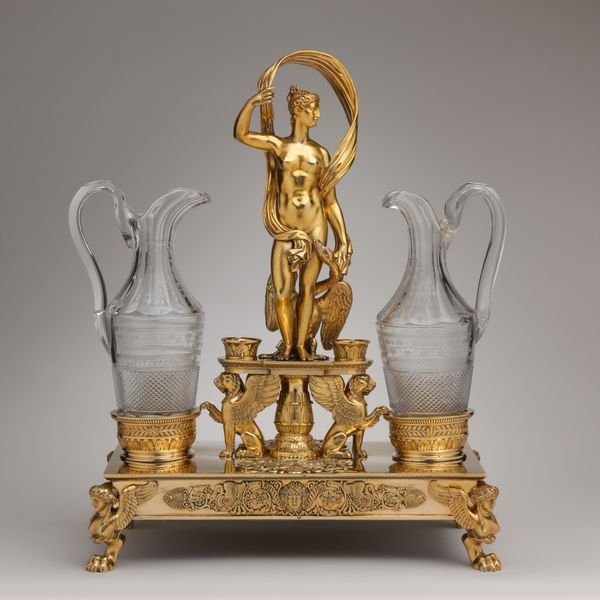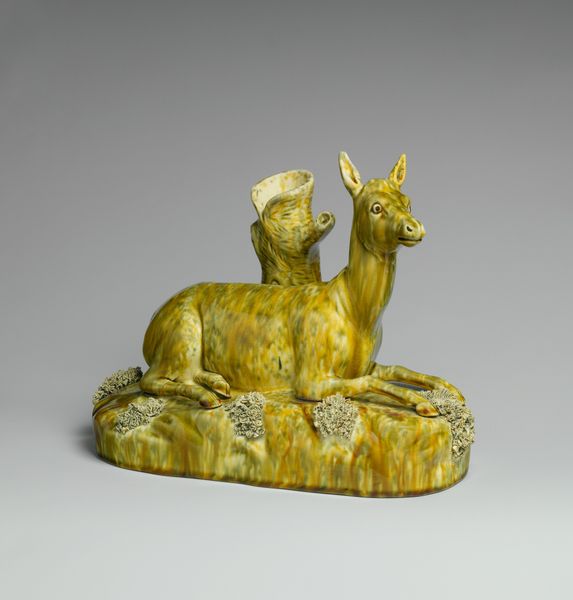
gold, bronze, sculpture
#
animal
#
sculpture
#
gold
#
bronze
#
figuration
#
sculpture
#
decorative-art
#
rococo
Dimensions: height 35.8 cm, width 25.8 cm, depth 16.1 cm, width 20.5 cm, depth 12.5 cm, weight 10.6 kg
Copyright: Rijks Museum: Open Domain
Curator: I am struck by the sheer opulence! What catches your eye first? Editor: The material. These are a pair of gilt bronze firedogs by Philippe Caffieri, made around 1770. The labor and resources poured into this object just scream class and power. How was such lavishness received in pre-revolutionary France? Curator: With admiration, I suspect, although social tensions were definitely simmering. Pieces like this, meant to adorn a fireplace, were very much statements. The cat form, though, feels a bit unusual for such formal décor, wouldn't you agree? Editor: Not really. Cats were certainly symbols of domestic comfort and even feminine wiles. It speaks to Rococo aesthetics blurring those firm lines. Curator: True, true. Tell me more about the context. How does the institution influence the reception of this artwork in this moment? Editor: Consider the display of the work itself, often strategically placed to signal sophistication and historical continuity. Objects like this become emblems of national cultural heritage. Their existence, production, and even survival through historical upheavals testify to cultural capital that shapes how art and culture are interpreted and consumed. Curator: That's interesting; I was mainly concerned with how the thing was fabricated. It definitely feels distinct from typical animal sculptures or royal iconography, speaking volumes through form and decorative processes alone. But thinking about this cat as a survivor gives a richer appreciation for the artisan culture and society back then. Editor: Precisely! And notice how even a utilitarian object becomes charged with political and social meaning. The choice of bronze, the gilding process, it’s all interwoven. Curator: Definitely not a purely functional piece. Examining the consumption and significance, seeing the Rococo legacy, enhances one's comprehension more fully than looking at mere process. What an enriching glimpse into a past world of gilded tastes and craft! Editor: Indeed! It's a prime reminder to look at an art object to really delve deeply, to explore history through it all.
Comments
rijksmuseum about 2 years ago
⋮
Firedogs were placed in the hearth as supports for the metal rods on which the logs of wood were laid. The poodle and the cat seem to be warming them-selves by the fire. The famous bronze-caster Philippe Caffieri is known to have made firedogs with such animals.
Join the conversation
Join millions of artists and users on Artera today and experience the ultimate creative platform.
